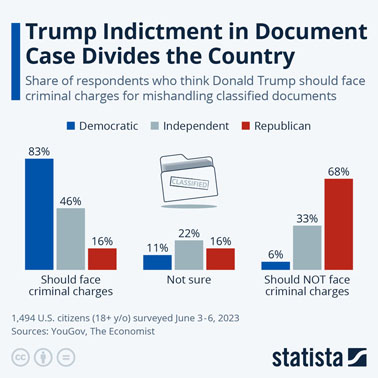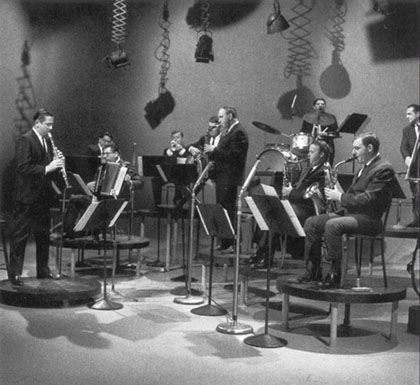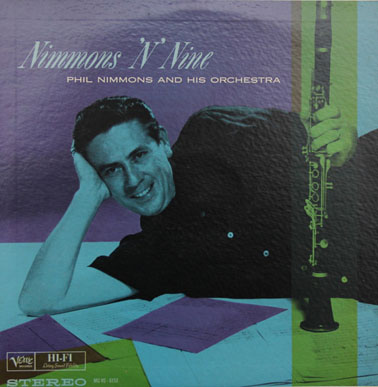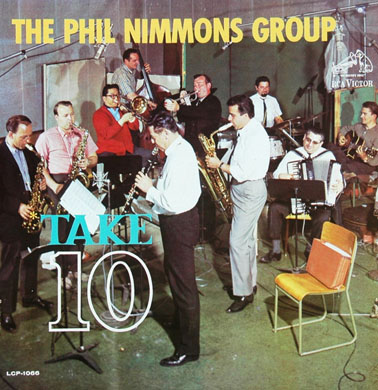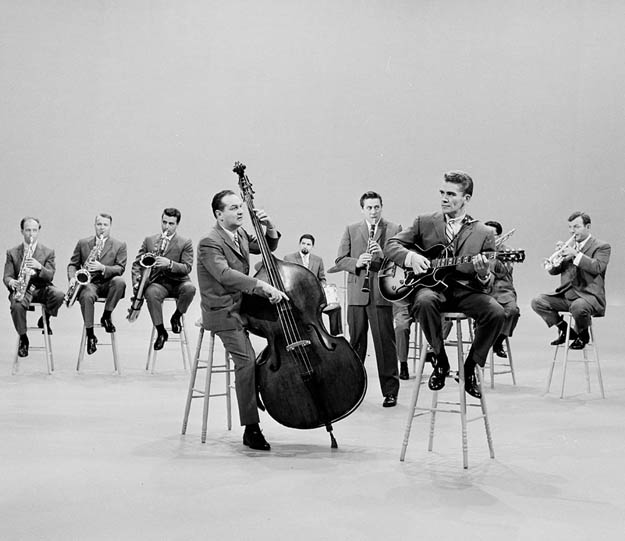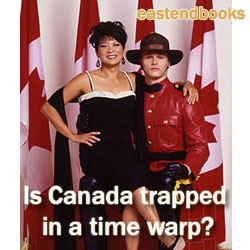Why one Phil Nimmons at 100 is worth 74 million Donald Trumps (at almost 77)
Jun 10th, 2023 | By Randall White | Category: In BriefNORTH AMERICAN NOTEBOOK. RANDALL WHITE, FERNWOOD PARK, TORONTO, FRIDAY, JUNE 9, 2023. As I start writing it’s about 11:30 PM ET on June 8.
I’m finishing, after a break for sleep, meals, and whatnot, about 11:30 PM ET, June 9. (Even if all this does not finally get posted till the early morning of Saturday, June 10, 2023.)
On June 8 the big story even on the CBC News site in Canada was : “Donald Trump says he’s been indicted over handling of classified documents … Trump facing 7 criminal counts in the federal case, media reports say.” On June 9 the CBC reported further on : “Indictment unsealed: Trump faces 37 charges related to national security … Newest charges more serious, more sweeping than earlier accusations.”
On June 8 Canada’s more private sector CTV News was telling us : “Trump charged over classified documents in 1st federal indictment of an ex-president.” And then on June 9 : “Donald Trump described Pentagon plan of attack and shared classified map, indictment says.”
Is Donald Trump getting what he deserves at last?
I have been watching CNN and MSNBC (and CBC and CTV News: all together on my Canadian cable service) as I try to understand just what this second (albeit “1st federal”) indictment of Donald Trump means. I think I really don’t have much to say on the subject at the moment — beyond I do feel it’s interesting, certainly historic, and ultimately (I hope) a good thing.
I continue to believe it’s important to remember that more than 74 million Americans voted for former President Trump in 2020. At the same time, I have become increasingly persuaded it’s finally more important to remember that more than 81 million Americans voted for Joe Biden.
Donald Trump and far too many Republicans still too often deny that Joe Biden quite unambiguously won the 2020 election — as a hard political fact of democracy in America today.
This is just part of a broader pattern of passionately profound lying, from recurrent small crooked dealing and crypto-gangster hi-jinks, to the 2020 election result, to the crazy January 6, 2021 attack on the US Capitol, to what Robert Reich calls Trump’s “seditious conspiracy against the United States.” And this kind of presidential (and aspiring presidential) behaviour, I finally agree, can have no place in the democracy that is the USA’s highest human achievement.
Or, as the former Senator (and profoundly conservative) Liz Cheney has wisely urged, Donald Trump has shown that he is altogether unsuited to the serious job of President of the United States of America. It is increasingly important to finally hold him accountable for his altogether unacceptable behaviour in office, for the future health of the democracy. It must finally be clear to all that Donald Trump’s career as a US president is an example for no one else to follow.
I at least have now become persuaded by arguments of this sort. Apart from anything else, the way the other side is moving just seems to leave no choice. And if holding Donald Trump accountable at last involves (among other things) some legally tight but narrow case of mishandling public documents, I finally like this well enough, as a step in the right direction.
Remembering Nimmons N’ Nine in the 1960s
Meanwhile, on a much brighter note, I was profoundly pleased to see an article by David P. Ball on the CBC News site this past Saturday. June 3 : “Legendary BC jazz musician Phil Nimmons turns 100 … Phil Nimmons founded a Canadian jazz school with Oscar Peterson and won the first Juno award for jazz.”
I suppose I was vaguely aware of the later Phil Nimmons, so to speak, who founded a jazz school and won the first Juno for jazz.
But what made me so enthusiastically welcome the news that he has now reached the remarkable age of 100 was my memories of the Phil Nimmons of the late 1950s and 1960s — a gifted clarinet player, big band arranger, and composer in his late 30s and early 40s who led a “Canadian jazz” group frequently known as Nimmons ‘N’ Nine (as on a 1959 LP from Verve Records).
I at least first became acquainted with the music of Nimmons ‘N’ Nine when I served as part of a few studio audiences for tapings of the group in a CBC studio of the day, on the west side of Yonge Street at Marlborough Avenue in Toronto.
As best as I can recall I went to these events with friends from high school bands in the first half of the 1960s. Someone I knew must have been on some circuit the CBC called when they wanted audiences. In my old age today I’m glad I somehow got raked in long ago.
I was certainly at more than one CBC taping of Nimmons ‘N’ Nine in the 1960s. And thanks to the research of Russ Clayton and Vintage Toronto I have just now discovered that the “CBC Studio 4” building involved has its own intriguing history — from a Pierce-Arrow Automobile Showroom in the 1930s to CBC Studio 4 1954–1992, to a Yonge Street Staples Store today.
(Or at least it was a Staples Store as of Vintage Toronto, May 1, 2020. I have not I think been by Yonge and Marlborough myself even that recently. I note as well a Google Maps image of the intersection dated “Sep 2021” that shows the old CBC Studio 4 building in the midst of some major renovation — or more? I should put walking up Yonge Street from the Rosedale subway station, or down from Summerhill, on my summer to-do list. Meanwhile, working remotely online today, I have just stumbled across Alex Barris’s book of the late 1960s, The Pierce-Arrow Showroom Is Leaking: An Insider’s View of the CBC. And that should say something about the world that, for a time at any rate, helped sustain the music of Nimmons ‘N’ Nine I’m trying to remember now.)
Beyond these CBC Studio 4 tapings I must have seen and/or heard Phil Nimmons’s various musical groups of the 1960s on CBC radio and TV as well, and in a few other Toronto venues. I don’t think I ever owned a Phil Nimmons LP record. But for a while in the 1960s I saw his groups perform live in Toronto often enough that I still remember some of the players.
The group that comes closest to my recollections appears on the cover of a 1963 RCA Victor LP called “The Phil Nimmons Group Take 10.” (When you add Nimmons himself to the Nine you do get 10.) Call it what you like. Broadly this band includes Nimmons on clarinet, three saxophones (alto, tenor, and baritone), trumpet and trombone, and a rhythm section of bass, drums, guitar, and accordion!
I particularly remember from the 1963 LP cover I can see online now : Jerry Toth alto sax, Butch Watanabe trombone, Erich Traugott trumpet, Ron Rully drums, Ed Bickert guitar, and Vic Centro accordion!!
Of course you may suddenly sit up, again, and say “accordion?? … I thought Nimmons ‘N’ Nine etc was supposed to be playing jazz??” And in one respect just see Geoffrey Himes from just this past February 2023 on “The Accordion in Jazz: Who’s Laughing Now? … ‘How is an accordion like an artillery shell?’ the old joke goes. ‘Once you hear it, it’s already too late.’”
I don’t think the fellow high school (and I guess eventually some college) band members I went to see Phil Nimmons groups perform live with in 1960s Toronto ever quite saw this music as real or serious jazz, in the great modern tradition of, say, Charlie Parker, Miles Davis, John Coltrane, and Thelonious Monk. And Vic Centro on accordion was one thing that made this clear enough. At the time it did seem eccentric to have an accordion in a jazz band.
On the other hand, like all the other players in Phil Nimmons groups, Vic Centro was a highly skilled and excellent musician. His accordion playing was interesting. And it did add something to the texture of the band’s sound. Viewed only a little sympathetically, it was an intriguing substitute for the more traditional keyboard instrument of the piano.
As the cover of the 1963 RCA Victor LP called “The Phil Nimmons Group Take 10” also makes clear this was largely a white man’s jazz band. The one exception of sorts in 1963 was “Jiro ‘Butch’ Watanabe (trombonist),” from a family “among thousands of Japanese Canadians classified as enemy aliens and sent to internment camps after … Pearl harbor in 1941.”
Whatever else, listening on YouTube now to two old LPs reminds me of how much I enjoyed listening to Phil Nimmons and his music in the 1960s. I regret that I was not in as close touch with his subsequent career — or with the increasingly excellent and diverse live music scene in Toronto.
I find this Wikipedia summary helpful : “Nimmons was born in Kamloops, British Columbia. He joined the University of Toronto in 1973. In 1953 Nimmons formed the ensemble “Nimmons ‘N’ Nine” which, later, he led during his weekly radio show on CBC radio … this ensemble grew to 16 musicians in 1965 and was active until 1980.”
I could possibly go on forever on all this. Some might say Phil Nimmons was an early part of a late 20th century Toronto big band scene that reached its highest expression in Rob McConnell and the Boss Brass. Others might disagree or not entirely agree or believe many other things.
I finally find it soothing and reassuring to think of such things as the 100th birthday of Phil Nimmons on June 3, 2023 — as I contemplate what may or may not happen to the USA, USA next door, in the wake of what is now the second indictment of Donald Trump. (And I remember the old argument that jazz — even old-school Canadian jazz that finds a place for the art of the accordion — is the music of democracy.)

